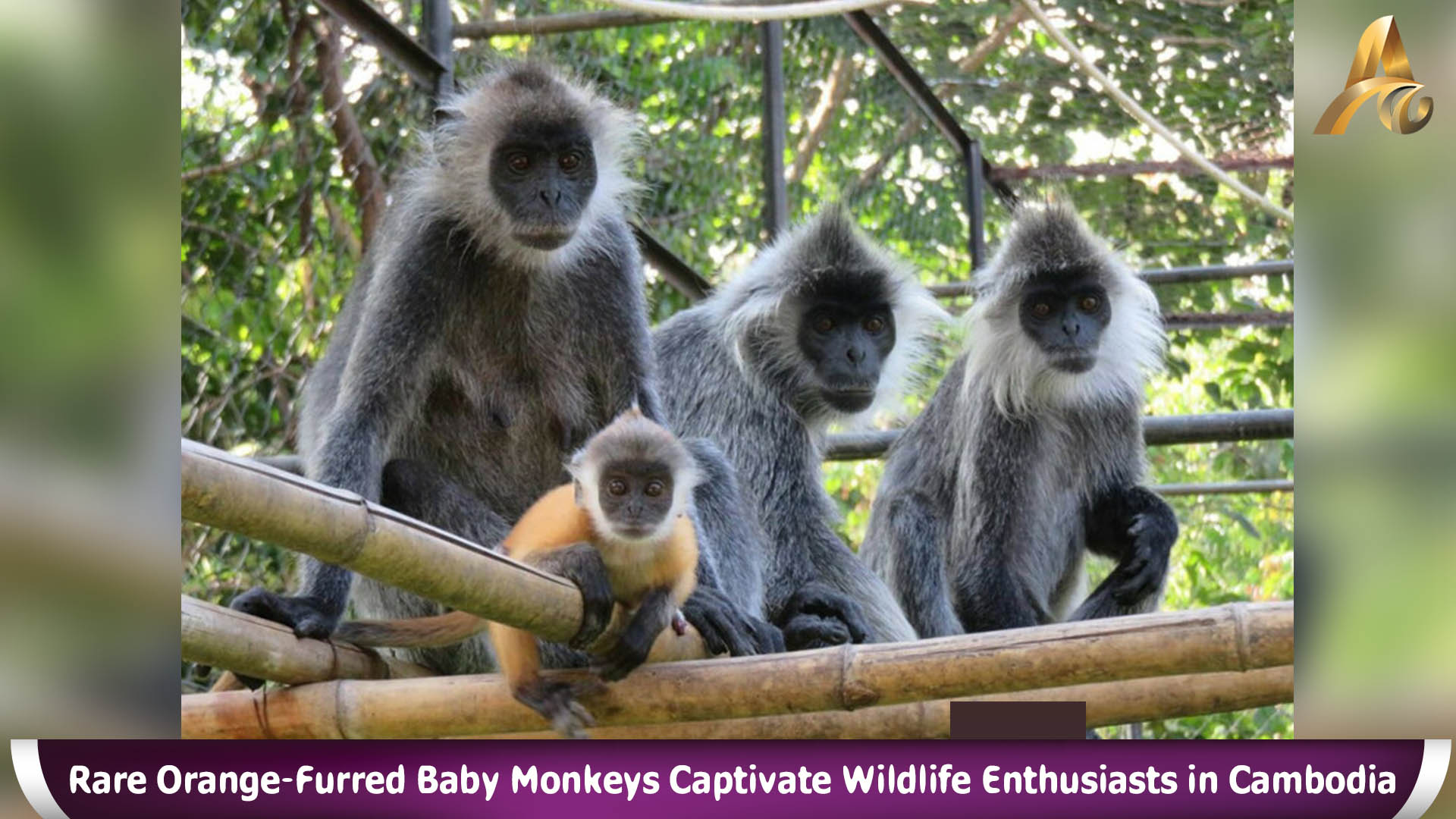Phnom Penh, March 12, 2024: Nestled within Cambodia's lush forests and conservation areas, a captivating revelation continues to enchant wildlife enthusiasts: the emergence of baby monkeys adorned in vibrant orange fur, with faces resembling tiny, endearing pumpkins. These young primates flaunt a distinctive tuft of hair atop their heads, reminiscent of their elder counterparts. However, their radiant orange pelage gradually transitions to shades of gray, enveloping their limbs and tail, with this metamorphosis commencing before they reach three months of age.
As these monkeys mature, their coats evolve into a predominantly black and gray hue, enveloping most of their physique. Their facial features maintain a striking blackness, lacking the characteristic rings around the eyes observed in certain other monkey species, while their nasal and oral regions adopt a whitish-gray tint. With time, they grow in stature, their limbs elongating to suit their arboreal lifestyle.
Exhibiting diverse color patterns influenced by their varied habitats—ranging from riverine expanses and swamps to dense and semi-dense woodlands—these monkeys are prevalent across Southeast Asia. Their habitats span the Cardamom Mountains, the vicinity of Tonle Sap Lake, the Cambodia-Vietnam border region, southern China, Myanmar (Burma), southern Indochina, and southern Thailand.
The Wildlife Alliance extols these monkeys as an extraordinary indigenous species facing perils from habitat degradation, illegal hunting, and the exotic pet trade. Initiatives to rescue and rehabilitate afflicted individuals are currently underway at the Phnom Tamao Wildlife Rescue Center, a bastion devoted to safeguarding Cambodia's native fauna.
Enthusiasts eager to witness these exceptional creatures in person and contribute to their conservation can explore Phnom Tamao or engage in a wildlife excursion orchestrated by the Wildlife Alliance. This endeavor not only affords a closer encounter with the species' captivating allure and behavior but also fosters awareness about the imperative need for conservation endeavors.
Studies indicate that these monkeys inhabit dense forests, semi-dense woodlands, and mangrove thickets, predominantly dwelling in tree canopies while occasionally descending to the ground for recreation and sustenance. Their diet encompasses shoots, tubers, tender fruits (such as pomegranates), blossoms, and insects. Living in groups ranging from 10 to over 40 individuals, they are renowned for their serene disposition. Breeding season spans from December to May, ushering in new generations and perpetuating the legacy of this remarkable species.























